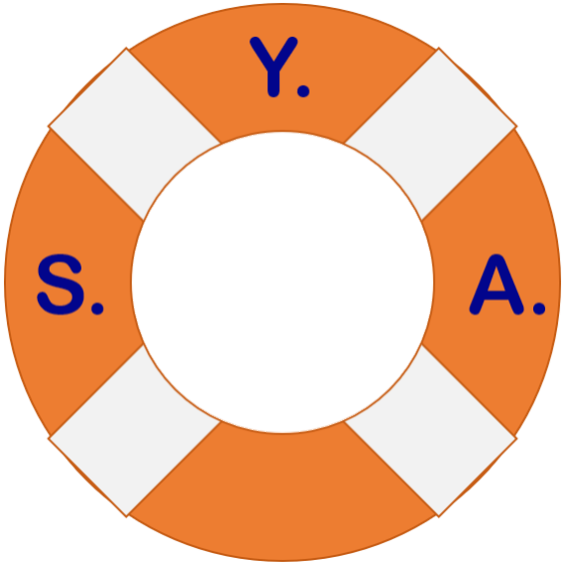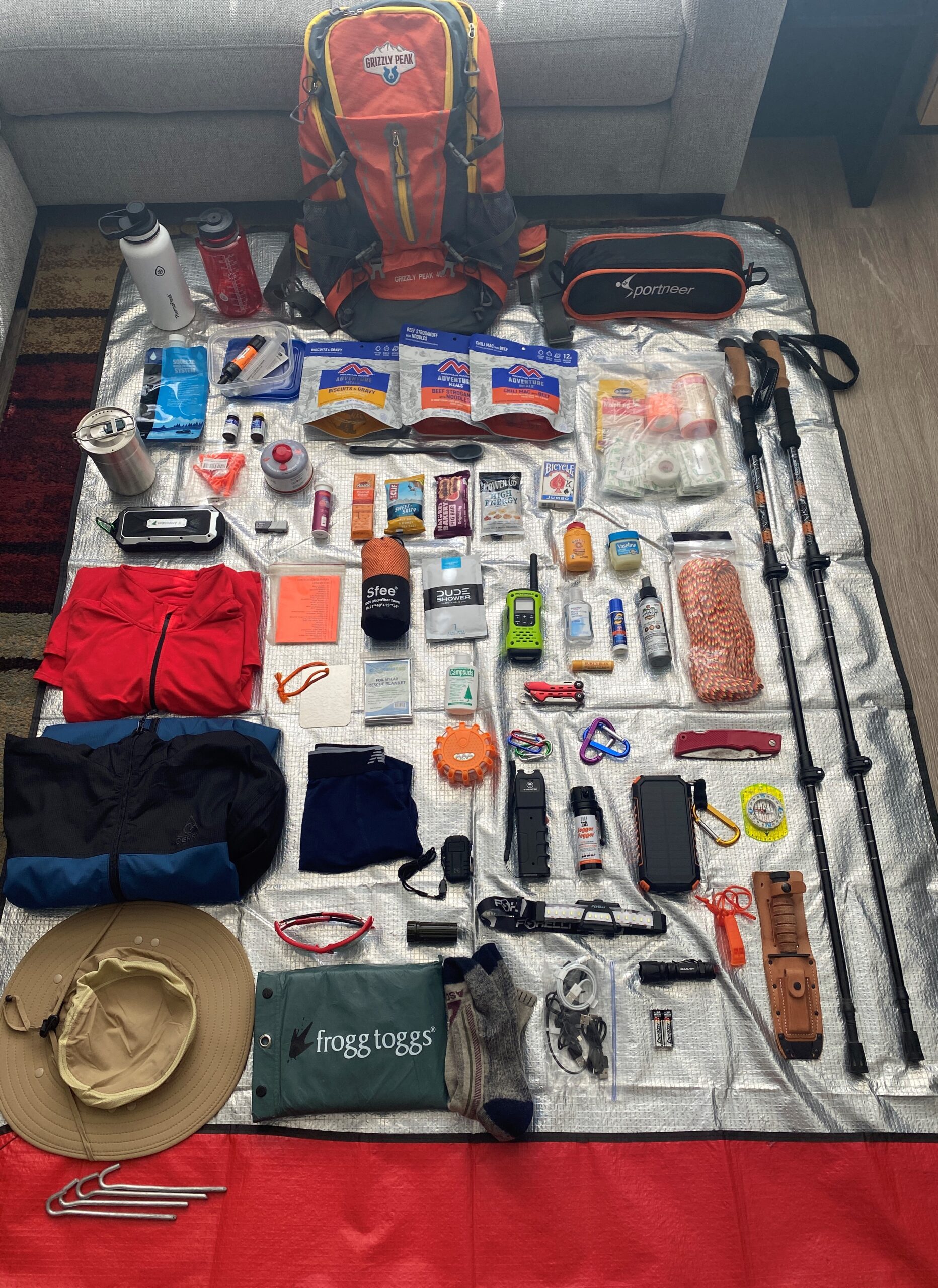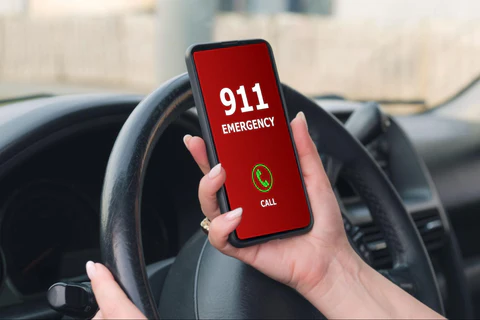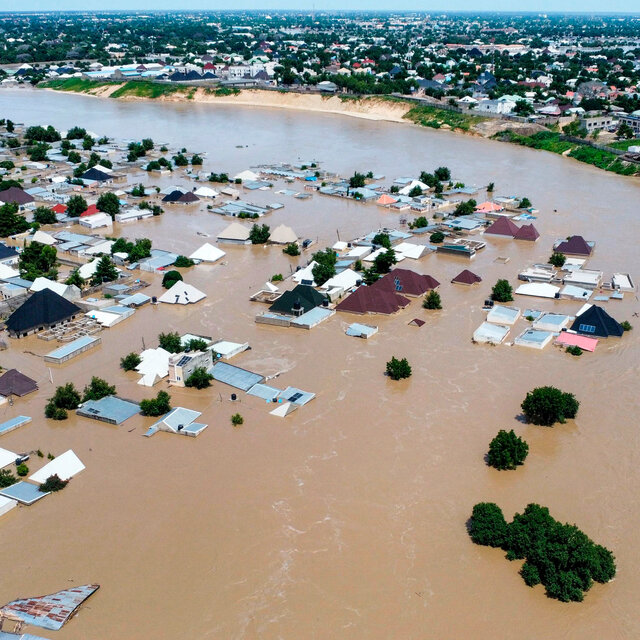As the west continues to wither due to extreme temperatures and a megadrought, the wildfire season is kicking into high gear thanks to all the dead and dry fuel. I figured it was a good time to talk about my bugout bag and what I keep in it just in case something goes horribly wrong and I need to evacuate my home.
I live in a suburban area of Utah just a few miles west of the Wasatch mountain range and am in no immediate danger of a wildfire over-running my housing complex. In fact if a wildfire were to force me to evacuate, it’s probably an end of the world scenario. I’m more likely to need to evacuate due to an earthquake than anything else, but it’s always good to make sure the items in your bugout bag are checked periodically to make sure you have what you think you will need and to replace any items that may have expired (food/medicines) or died (batteries).
What is a bugout bag?
Bugout bags or go-bags as some call them are bags that are already packed and ready to go at a moment’s notice. In a crisis situation, you can’t take the time to pack or dwell on if you need ‘a’ or ‘b’. It’s time to grab the bag and go. What you have is what you previously packed.
Now for my purposes, it’s prepped for a disaster situation where I need to evacuate my home and survive elsewhere for a period of time. For others, their go-bag may be a bag packed for sudden business related trips…think NTSB agents. When a plane crashes or train derails, they need to grab their go-bag and get to the disaster location as quickly as possible and be ready to live out of a hotel for days or weeks during the investigation. Many military members also have go-bags for a sudden deployment if they are called up to be sent somewhere in the world when a crisis develops.
In these situations you may have an hour or two before you have to leave, but in a disaster situation such as an earthquake or flash flood, time is very limited and critical. You don’t have time to pack, you have to leave…NOW!
My bugout bag
So what do I have in my bugout bag? Well my bag pulls double-duty as my hiking day-pack so it is regularly checked and items swapped in and out based on the location, terrain and day’s weather that is expected. That said, I always have a core list of survival type items packed regardless. I prefer to have something I don’t need versus need something I don’t have. This is what it looks like unpacked and laid out on display.
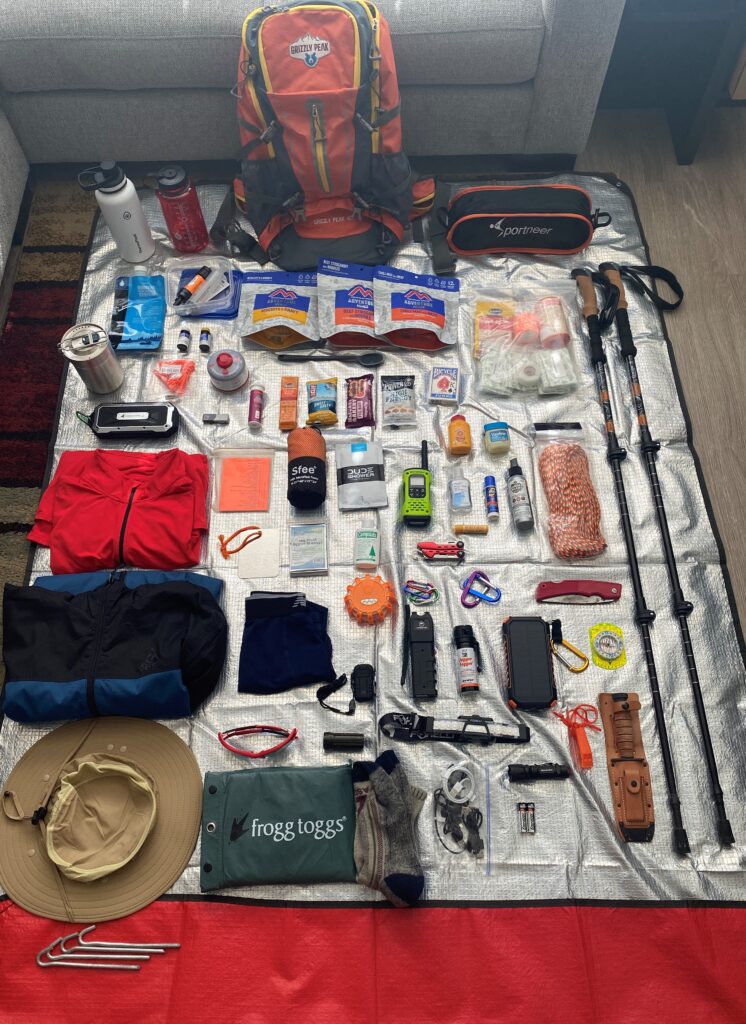
Categories
It may look like a lot so lets break it down into the categories I teach in my Emergency Prep Essentials course:
- 64 oz of water storage
- 1 – 32 oz. Nalgene
- 1 – 32 oz. Thermo Flask
- Water filtration straw
- Water Purification Tablets
- Tube of Nunn tabs
The 2 bottles provide me a 1/2 gallon of water to take with me. The tablets can purify up to 50 quarts of water and the filter straw can purify up to 1000 gallons of water. The Nunn tabs provide flavor and replenish electrolytes without sugary calories.
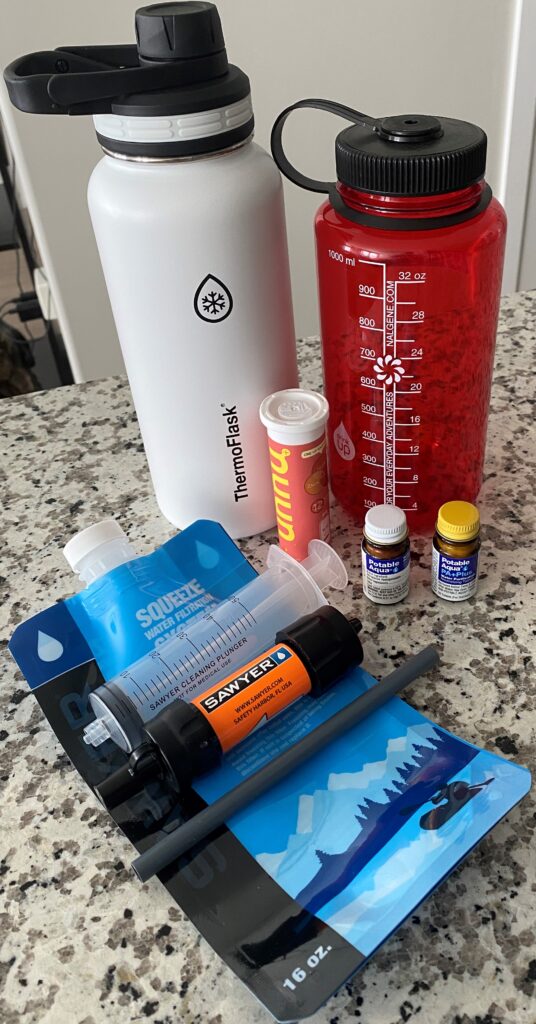
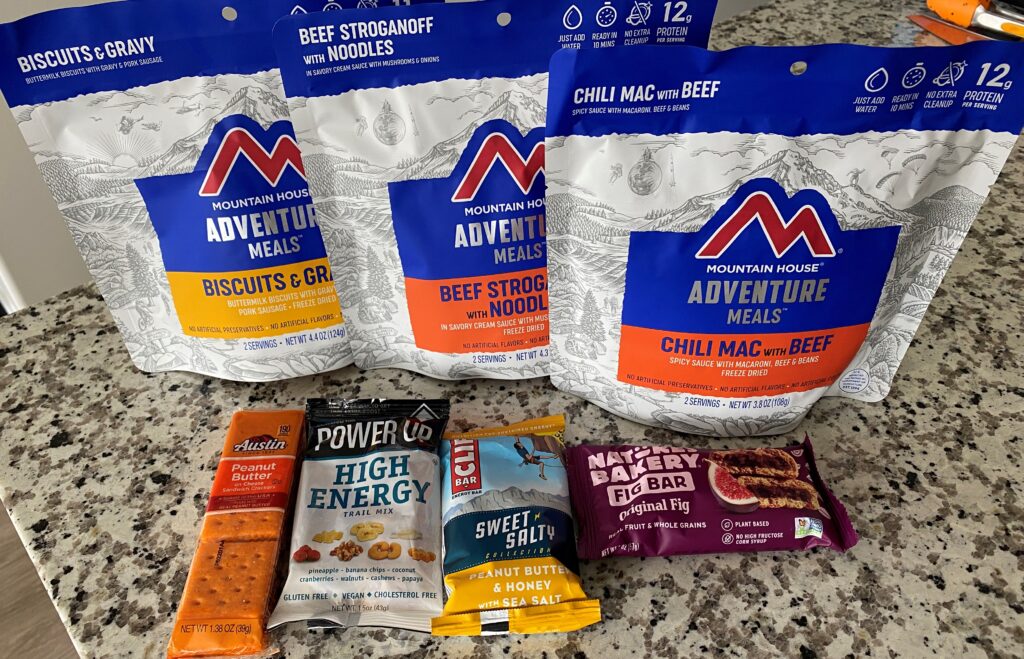
- 3 dehydrated meals
- Trail snacks (granola bar, trail mix, Clif bar, beef jerky, nuts, etc)
This gives me enough calories to last 2-3 days.
- 5′ x 7′ Tarp (Reflective one side)
- 4 aluminum tent stakes
While not as good as a tent, I can create an emergency shelter if necessary using these items and some of the paracord I carry.
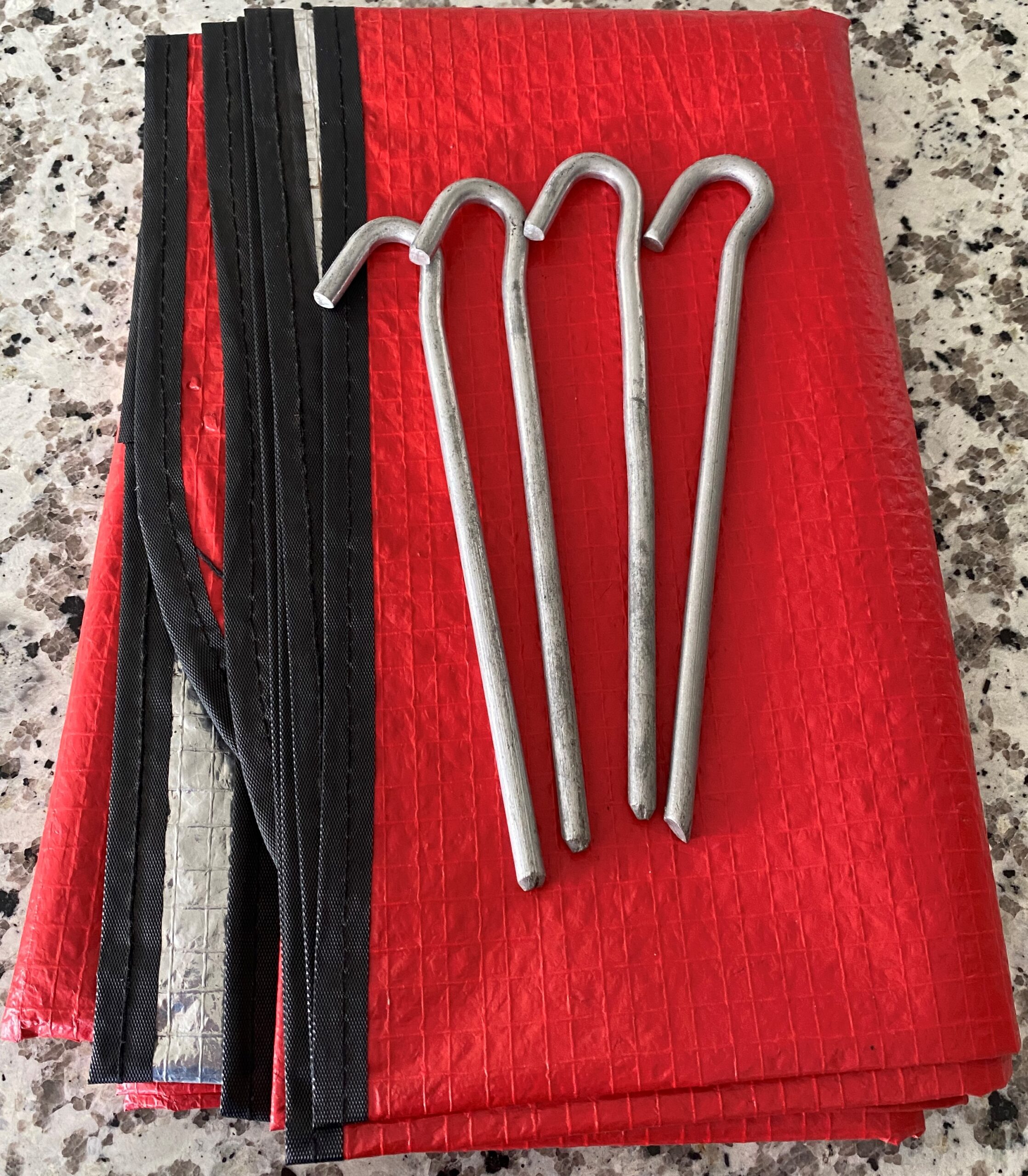
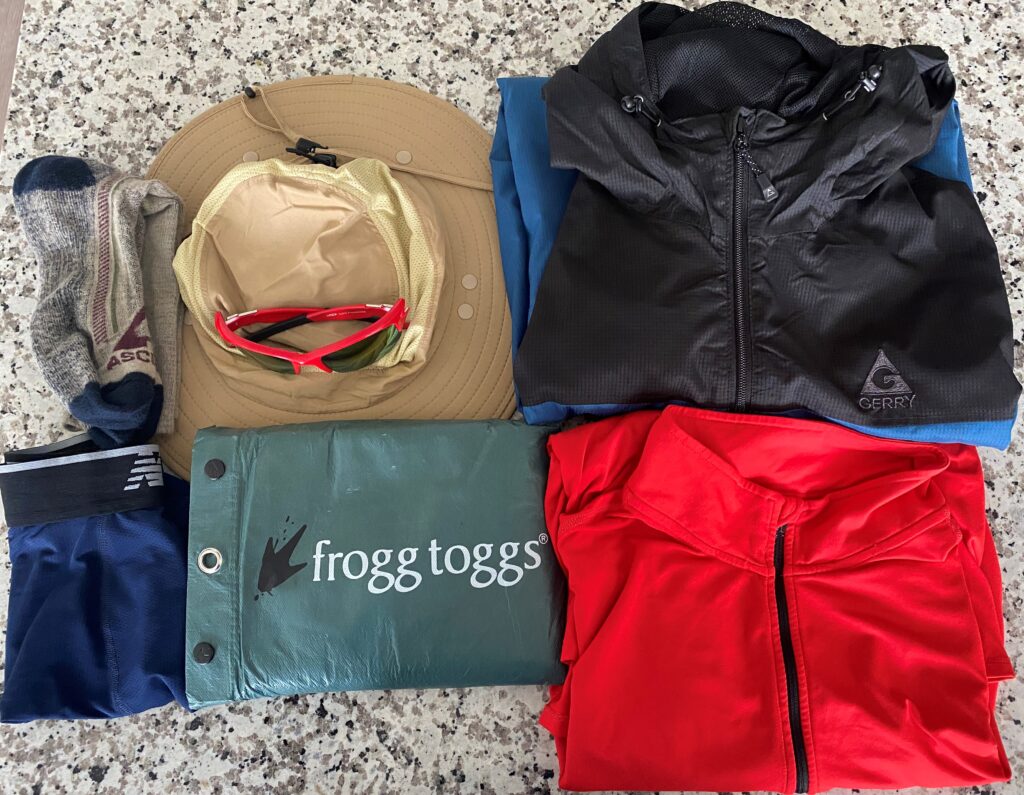
- frogg toggs rain poncho
- Light windproof jacket
- Lightweight pullover
- Pair of performance underwear
- Pair of wool socks
- Hat with sun/dust protection
- Sunglasses
Not going on vacation with these few items, but they provide protection against the sun, wind, rain and cooler temperatures if necessary.
- First Aid kit (bandages, gauze, antiseptic pads, splint, etc.)
- Chapstick
- Foot Powder – travel size
- Moleskin / Mole foam
- Vaseline – travel size
- Hand Sanitizer – travel size
- Biodegradable soap
- Sunscreen stick
- Bug-repellant spray
- Microfiber towel set
- 2 Dude wipes – Fragrance Free
- Toilet paper
Enough to cover basic first aid needs as well as protection from the sun, insects, chaffing, blisters and some basic field cleaning of stinky body parts.
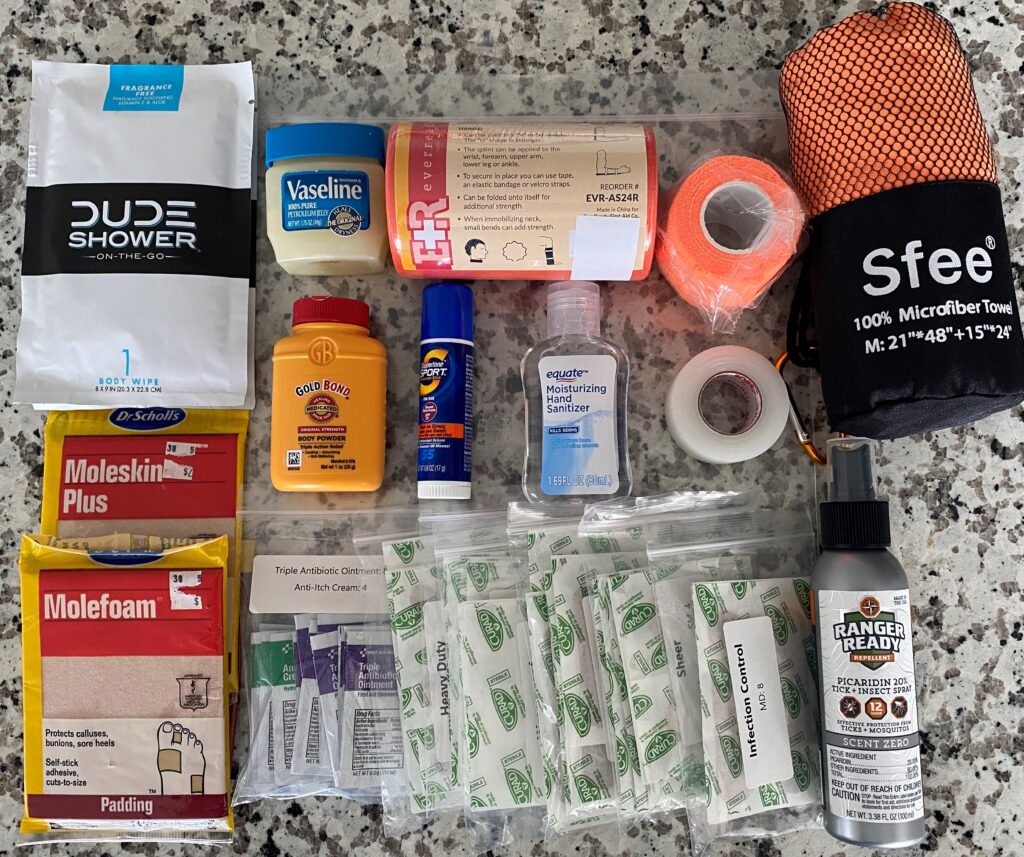
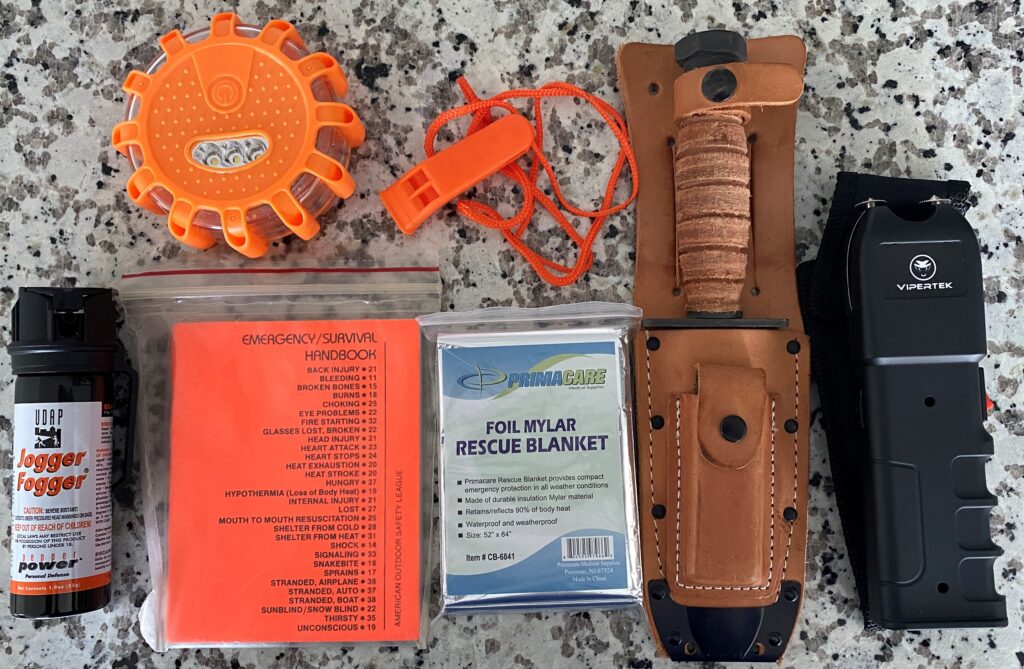
- Emergency Flasher (USB rechargeable)
- Emergency blanket
- Emergency Survival Handbook
- Emergency Whistle
- Pepper Spray
- Stun Gun (Outlet rechargeable)
- Survival Knife
Basic survival gear and protective equipment.
- Flashlight (1 AA battery)
- Headlamp (USB rechargeable)
- USB Battery pack (solar rechargeable)
- Charging cables for rechargeable devices
- 2 extra AA batteries
Have a source to recharge your smart-phone is essential these days as is being able to navigate in the dark.
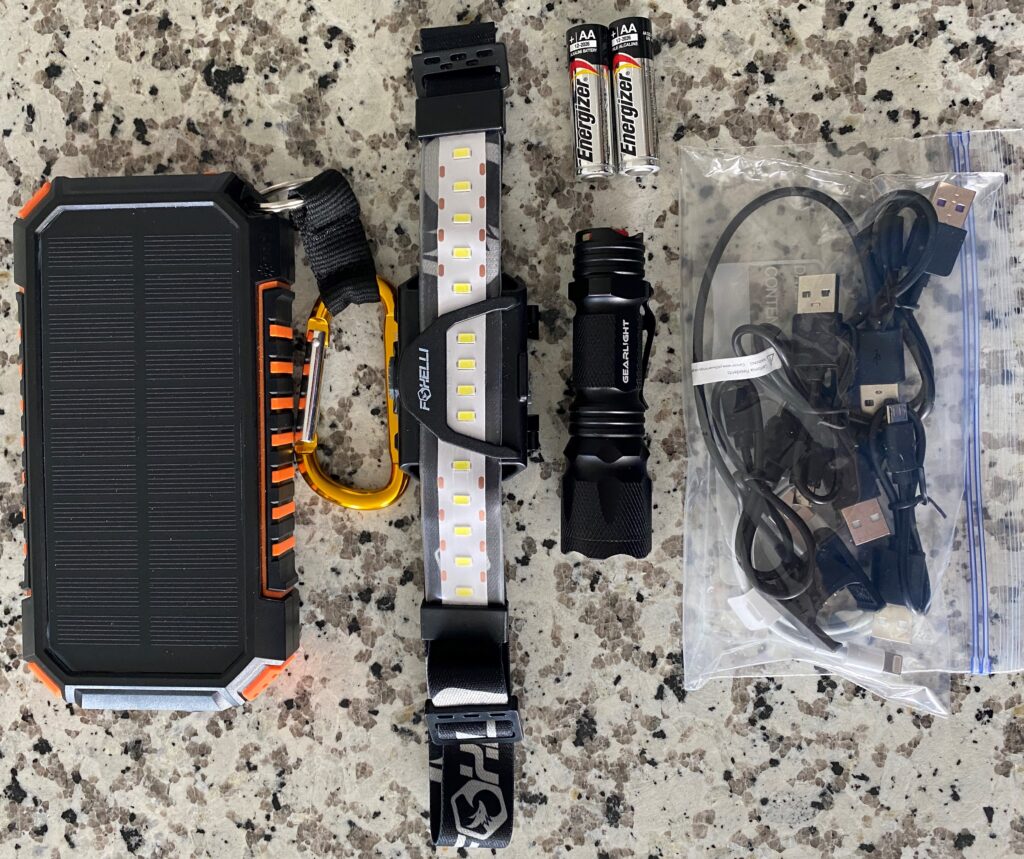
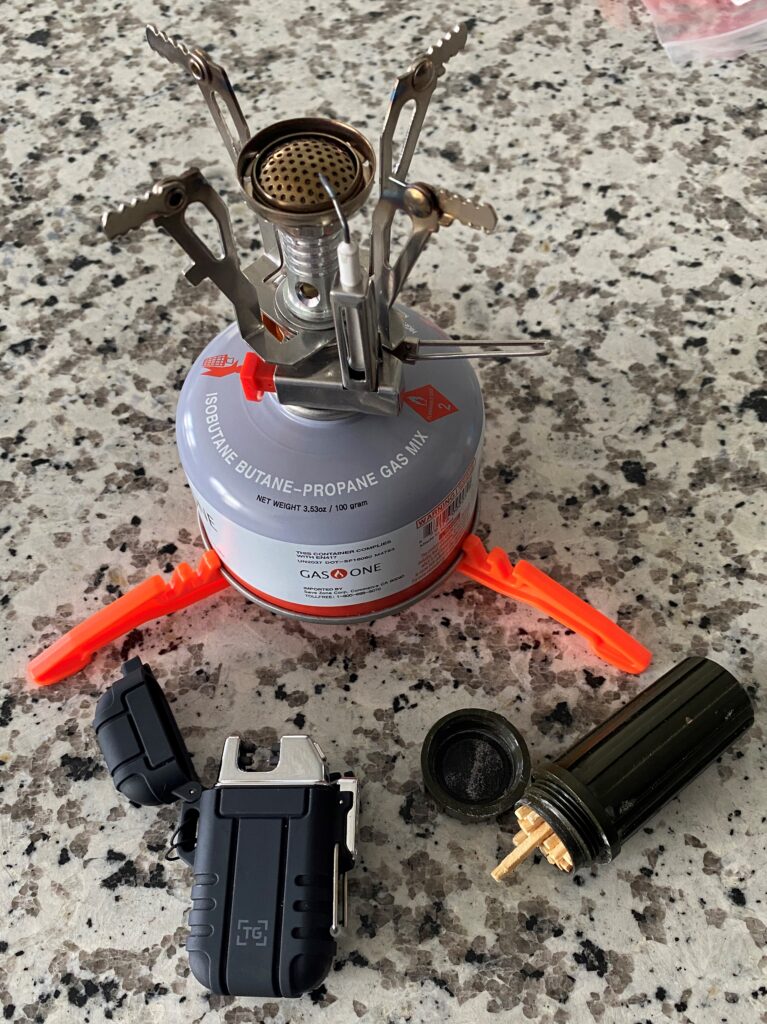
- Plasma lighter (USB rechargeable)
- Matches in waterproof container
- Backpacking stove
- Isobutane (100g) fuel canister
- Plastic base to stabilize setup
The stove is self-igniting and can boil a couple cups of water in under 5 minutes. The plasma lighter and strike anywhere matches are good backups in case you need to build a fire.
- Small pot to boil water
- 2 cups that nest inside the pot
- Spoon
- Multi-tool
- Folding saw
- 100′ of paracord 550
- Compass
- Trekking poles
- Utility carabiners (not for climbing)
- Work gloves
- Backpacking trowel
Basic tools that can be used to create a shelter or pioneering project, clear debris, stabilize you on narrow or steep paths, find your way, and enjoy a meal or cup of coffee.
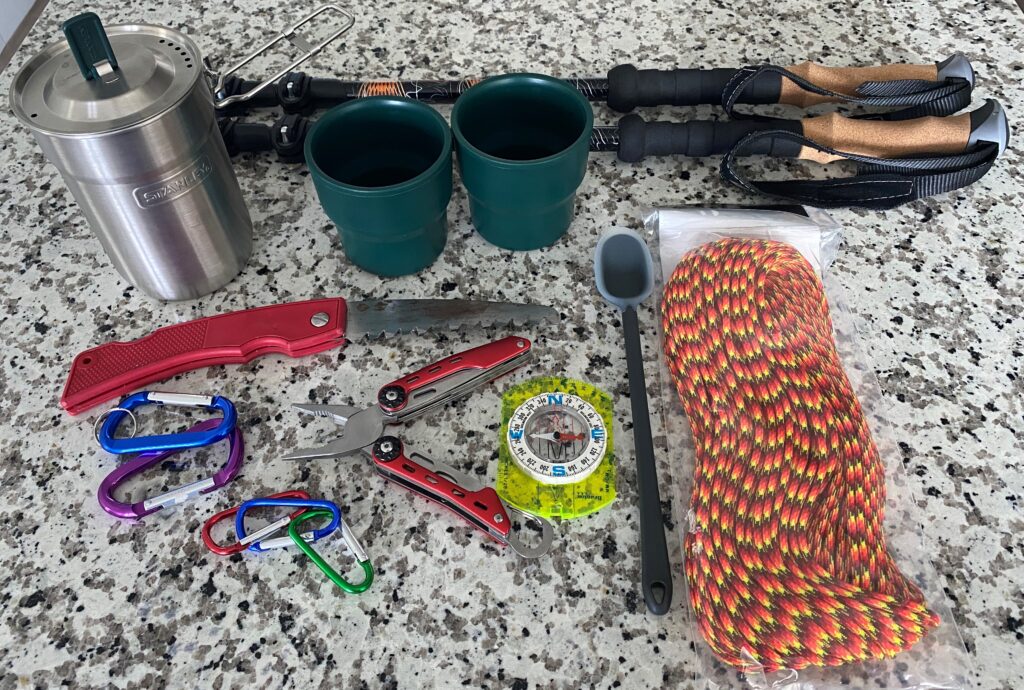
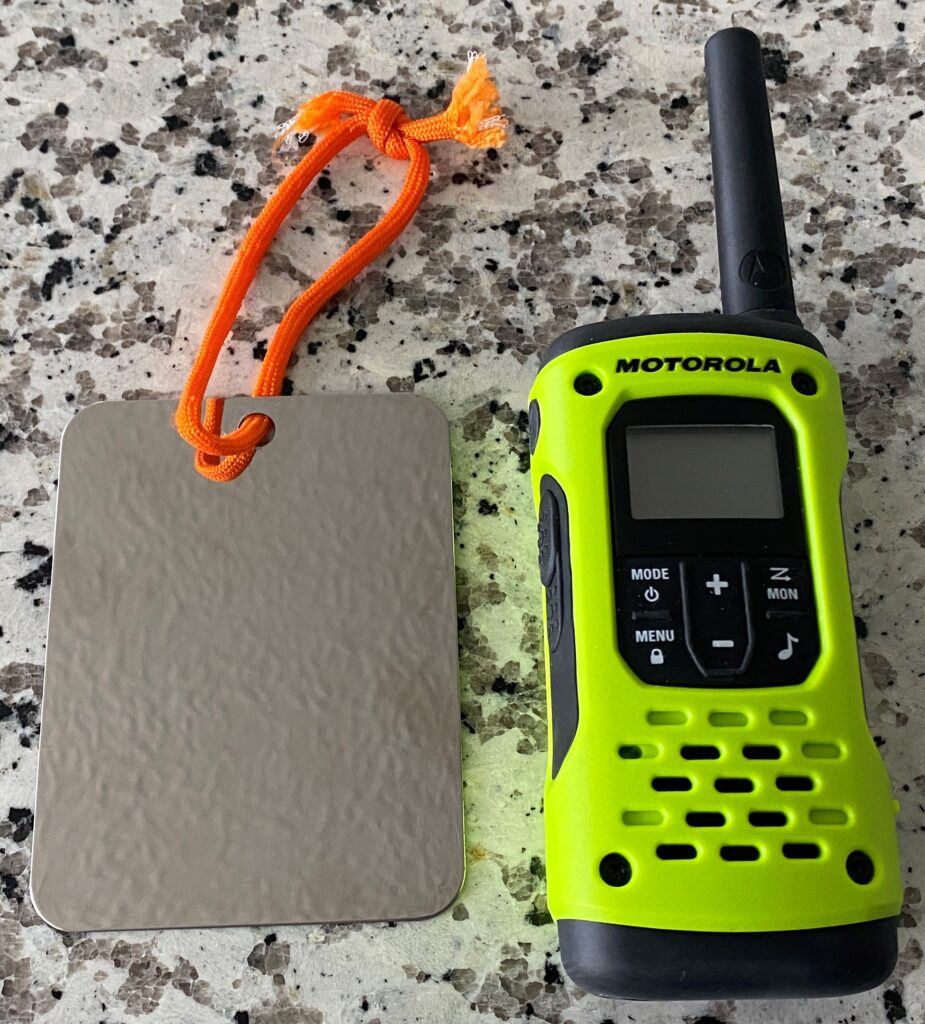
- Two-way radio with NOAA weather / emergency channel (USB rechargeable)
- Signal Mirror
Have a way to communicate and receive emergency broadcasts is critical in a disaster situation.
- Deck of cards
- Bluetooth speaker (rechargeable)
- Collapsible backpacking chair
It is nice to have a place to sit off the ground, listen to some tunes or information about the disaster and pass the time by playing solitaire or card games with others.
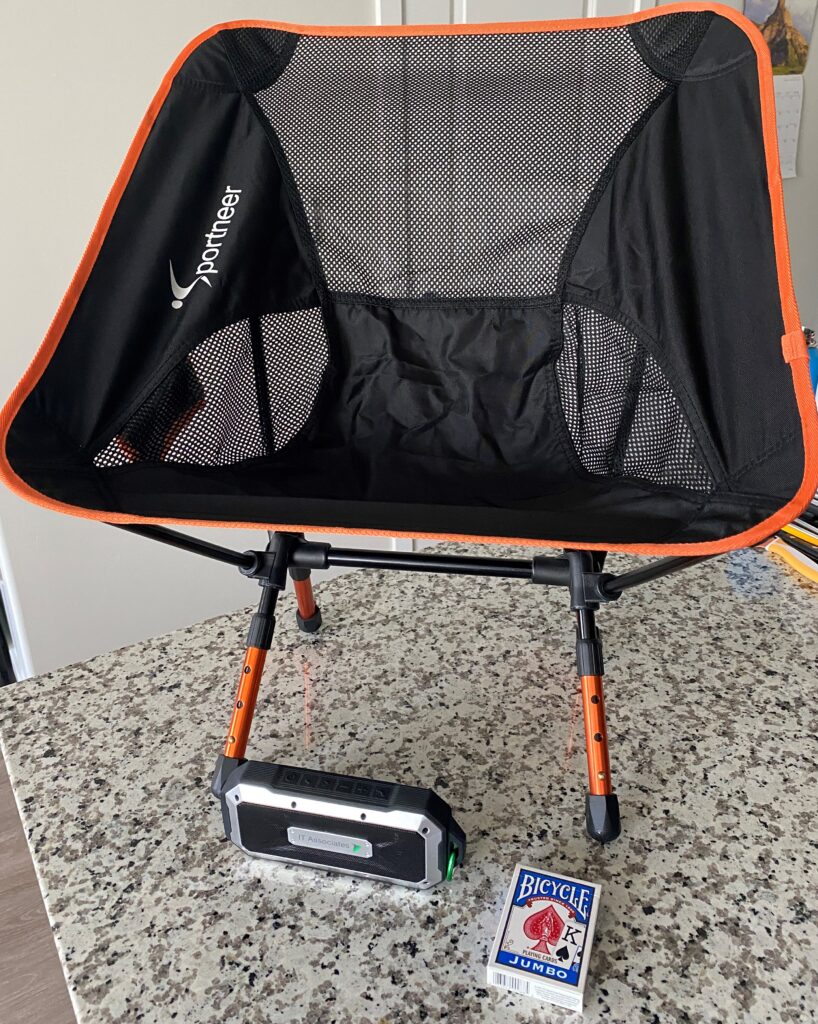

- USB Drive w/ Electronic Backup
- Updated quarterly
This should contain electronic copies of any important documents.
- Snowshoes
- Crampons / Ice Cleats for hiking boots
- Lightweight Collapsible Aluminum Shovel
- Hand warmers
- Long underwear
- Gloves
- Wool hat
Do I really need all that?
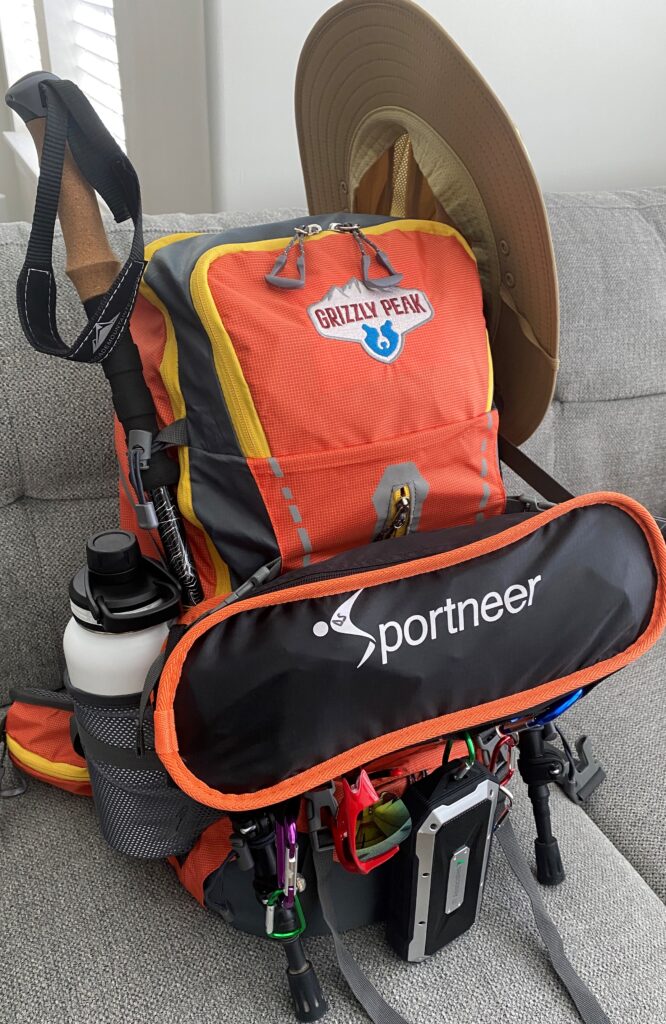
Depending on your perspective, it may seem like a lot or not enough. It works for me and all fits in or on a 45L backpack and weighs a total of 26 lbs. with the water bottles filled or 22 lbs. with the water bottles empty (add 3-5 pounds for winter additions).
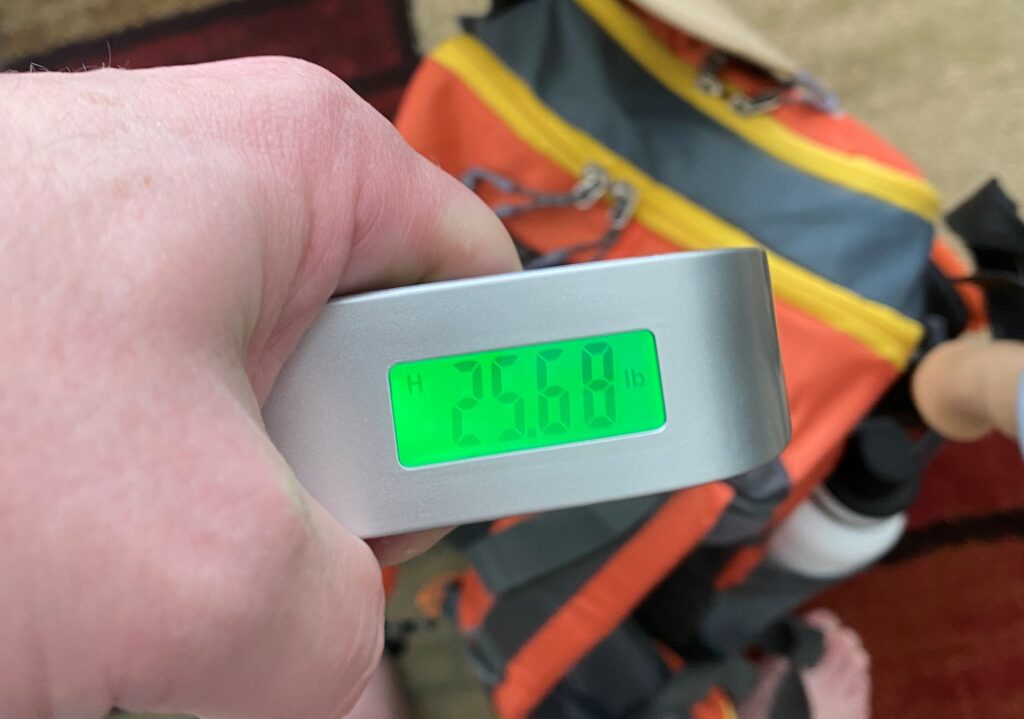
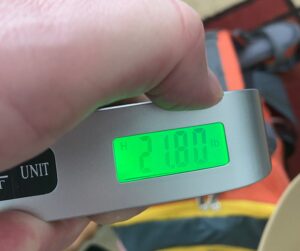
Admittedly space is tight and I will eventually get a bigger backpack but I can easily hike a minimum of 7-10 miles in a day with this depending on terrain and weather. Based on whatever the event or disaster is, I may have extra motivation and/or adrenaline to go much farther.
What about more stuff?
On the other hand, you may be thinking, what about more clothes and food, or a tent and sleeping bag? Well if I used a bigger backpack I could pack all that, but it would be heavier and bulkier. Remember this is for an emergency, not a vacation. Once I’m am out of danger, I can figure out my next steps. Hopefully it’s only a temporary situation of a few days to a few weeks at a shelter, hotel or friends house. If I have time, of course I’ll grab more clothes to take with me.
In addition to my bugout bag, I have several containers of camping gear (including a tent and sleeping bag), emergency food rations, cases of water, etc. ready to go at a moments notice that, also time permitting, would be put into my car with my bugout bag. It would extend my ability to survive on my own for a longer period if the situation called for it.
Do you have a bug-out bag? What’s in It? Join the conversation below.
Last Updated on August 16, 2022
